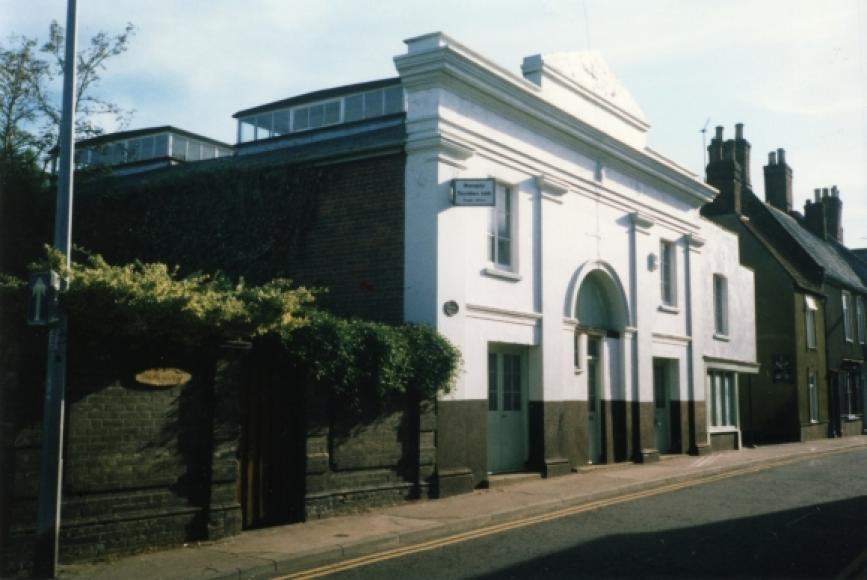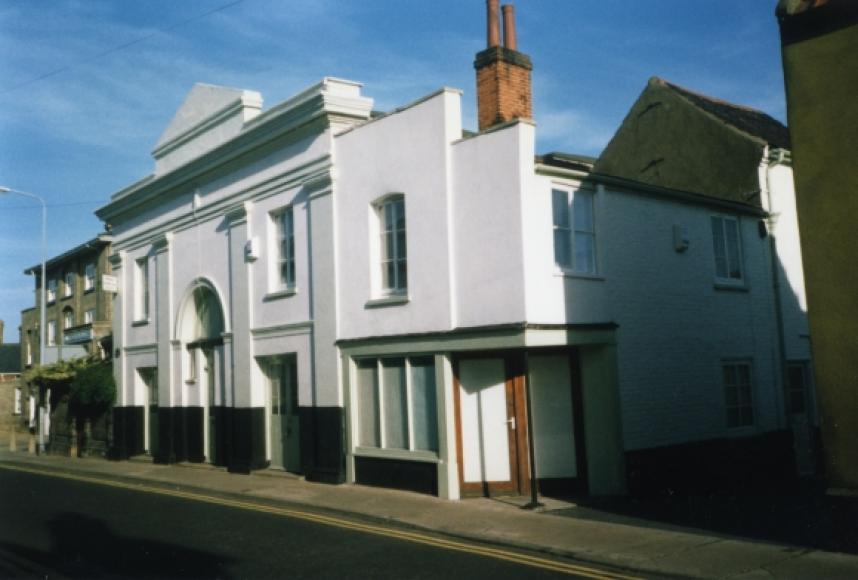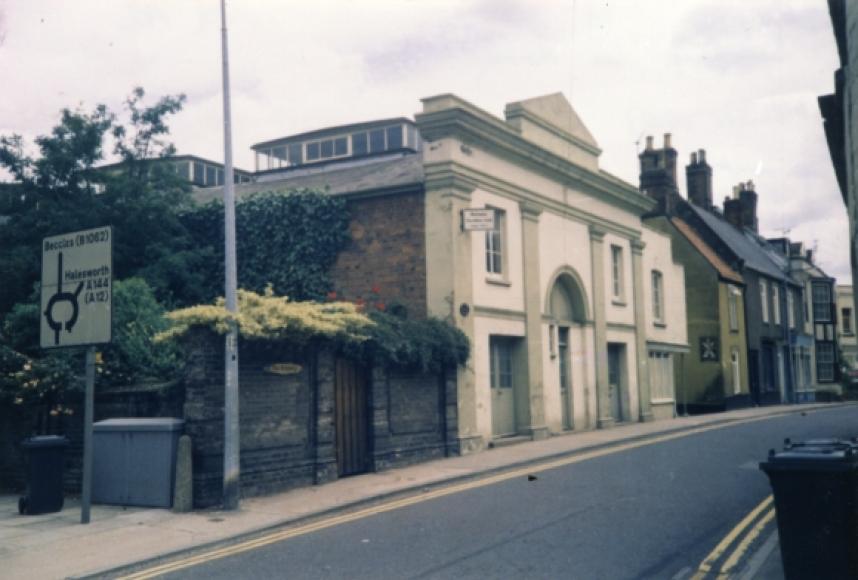Fisher Theatre
A rare survival. Bungay Theatre was built in 1828 as one of the Fisher circuit playhouses in which use it remained until 1844. It was then converted into a corn hall and subsequently served as a furniture store, a laundry, a cinema and, finally, a warehouse for a textile company. It stands on a 3-rod wide property strip occupying approximately two-thirds of the width and sharing the remainder with a row of cottages backing onto the south flank wall and opening onto a side lane. There are later outbuildings to the rear of the theatre.
The overall plan dimensions of the theatre are c.35ft wide on Broad Street and 80ft long. The building is the equivalent of two storeys high, generally in red brick but with a handsome stuccoed façade enriched in classical manner with four full-height Tuscan pilasters carrying an entablature topped with a small, central pediment. A central entrance, marked by a large blind, round-headed arch, is flanked by probably later subordinate entrances each with a window over. On the left-hand pilaster there is a plaque commemorating the theatre. The building has a slated roof with the ridge at right angles to the road. The original surviving fabric of the building appears to be confined to the envelope walls, possibly the roof trusses and some vestigial remains of the pit together with the understage area. A later floor has been inserted throughout at ground level. Also of later date are the balcony and the three large roof lights. In the area of the pit its rear curved wall is visible together with the front wall of the stage. The pit access stairway leads up through one of the cottages. Beneath the stage are several brick piers probably built to support the inserted floor, stone benching along the walls (laundry?) and another stairway to a cottage.
A feasibility study into the possibility of re-opening as a theatre was undertaken in 1998, but the group formed to acquire the building for this purpose was overtaken by a commercial purchaser.
The basement in 2004 was much as it was when surveyed by Richard Southern after the last war. Further works in 2005 revealed more evidence in the basement of the form of the Georgian theatre than had been anticipated. The discovery at this time of a painted cloth, which appears to be a proscenium header, seems likely to be one of the oldest examples of scene painter's work now surviving in Britain.
In 2006 the theatre finally reopened and now serves as a community arts centre, with a full and broad programme of events. A great deal of the work to refurbish the theatre was done on a voluntary basis and is a great credit to the commitment of the local activists who worked for several years as money came to hand to rescue the theatre.
- 1828 - 1844: and 2006 continuing.
Further details
- 1828 Owner/Management: David Fisher
- 1828 Design/Construction: for the Fisher Circuit (architect unknown).
- 1828 - 1844 Use: and 2006 continuing.
- 2004 Alteration: part reconstruction as a theatre.John Putman- ArchitectTheatresearch- Consultanttheatre history and restoration consultant
- 2006 Alteration: refurbished and reopened as community arts centre.
- ListingII


